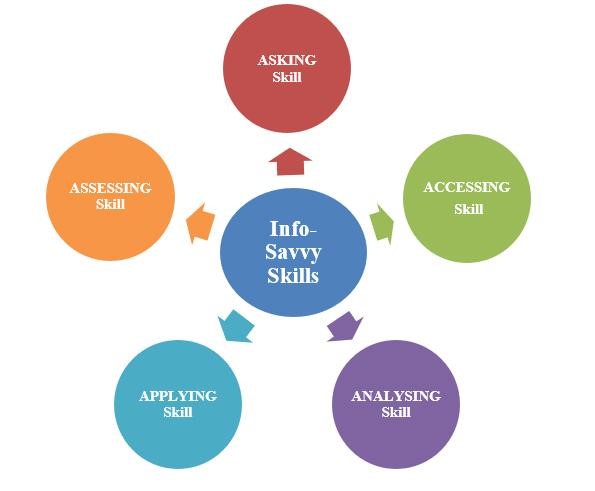Diagram credit Adamas University
Suchismita Majumdar
Communication & Policy Officer
ESDEG
Inclusivity is the new buzz word in the SEND system, but there is a lack of viewing SEND through an intersectionality[1] lens. This is particularly true for migrant families from ethnic minority backgrounds. They are a classic example of intersectionality where race, class, gender, immigration status, language barrier intersect and overlap. Multiple odds are stacked against them and this in turn impacts their children’s development and education.
ESDEG organised a focus group at the Viking Community Centre, Northolt for ethnic minority mothers of children with SEND needs. The purpose was to listen to the experiences of these women in accessing SEND services, obtaining diagnosis and understanding the referral process to Carmelita House in Ealing where NHS, social services and LA’s SEND team are based. Ten mothers from Pakistani, Somali and East European backgrounds attended this meeting.
While discussing the roadblocks to securing the best possible help for their children, mothers raised the issue of lack of awareness about the SEND system. When asked whether they knew of Ealing Council’s Local Offer, 7 out of the 10 mothers said that they were not aware of the Local Offer website, of the 3 who knew about the website only one said that she had used the website to research her son’s needs in the past, the other two said that though they were aware of the website, they preferred to speak to a professional like the SENCO to get the information. Two ladies who had older children said that once they got home they would ask their older children to check out the website on their behalf.
It was clear that most of the mothers were unfamiliar with the term Local Offer, neither did they associate it with SEND.
| In case you are wondering what is the Local Offer and how is it relevant to navigate the SEND system. SEND Local Offer (LO) Web based LO is designed for children and young people aged between 0- 25 years with SEND needs and their families published by the Local Authorities (LA).LO provides information about support services and provisions available to the families in their local areas, the eligibility criteria and how to access those services. Under the Children and Families Act 2014 it is a statutory duty of each local authority to design and publish a LO for their area and revise and update the information on the website on a regular basis.The term Local Offer is coined by the national government and many local authorities have changed it to suit their needs. Like the Kent Council calls their local offer ‘SEND information hub.’ |
There is an easy read guide of the Ealing Council’s Local Offer website which highlights the key points and features of the website and gives tips on how to use it.
There is also a leaflet detailing the services the website covers.
But by its very nature the SEND Local Offer website is an information dense cyber labyrinth and the experience of using it is similar to that of peeling an onion albeit virtually. Much like an onion reveals its layers upon peeling, Local Offer reveals a world of information on SEND but it does require its users to possess a degree of cyber savviness and research aptitude to successfully search out the relevant information. It was clear from their responses that though some of them were digitally literate, the mothers did not possess the skills or the aptitude to navigate the Local Offer, nor did they seem to trust the internet to provide them with the answers crucial to their child’s future. Also since they were incapable of using technology it made them dependent on others like their children, spouses, and/or other family members. For the migrant mothers of ESDEG’s focus group, SEND Local Offer was neither accessible nor comprehensive.
| Local Offer Should be Accessible to All According to the Department for Education Report on Local Offer (2014) ‘The LO needs to be accessible to all families with a child or young person with SEN and disabilities, not just to those with a computer and access to the internet.’ In accordance with this Kent County Council’s Local Offer website clearly states “If you know of someone who does not have access to the internet, they can use computer facilities at one of our libraries. At our libraries, we also offer accessible library services and facilities.” |
| 10 million people in the UK lack the very basic foundation skills needed for our digital world (Lloyds Bank EDS, 2021) Data & Diagram credit The Good Things Foundation |

Why do migrant women from ethnic minority backgrounds find it difficult to navigate the Local Offer which is a cyber maze?
The answer to this question is best understood when viewed through an intersectionality lens. These women are fighting too many odds stacked against them and Digital Divide is just one of them. Refugee Action states in their website “Digital connectivity is a major challenge faced by refugees and people seeking asylum in the UK. As the role of technology in community life, education and interaction with the state grows, digital exclusion has become a significant cause of social isolation and deprivation, in the UK.” ESDEG would like to add another layer to this conversation and ask whether in this post Covid world where most services have migrated online just digital literacy is enough? Using the technology might be easy for today’s children, but for people who got exposed to it in their adulthood it is often a challenge. Not to mention the pressure of keeping pace with the rapidly evolving technology landscape. ESDEG’s focus group mothers are the perfect example. Though initiatives have been undertaken by Councils in recent months to bridge the Digital Divide, these mothers who already face communications barriers are yet to benefit from it. Meanwhile their children with SEND needs suffer.
| Digital Divide The Good Things Foundation states that “a lack of digital skills and access can have a huge negative impact on a person’s life, leading to poorer health outcomes and a lower life expectancy, increased loneliness and social isolation, less access to jobs and education. Although this growth predates the coronavirus pandemic, most services have been digitised since the outset of the pandemic.” |
Check out Ealing Council Employment, Learning and Skills Team’s latest initiative of distributing free laptops and data for the digitally excluded, unemployed residents. If you know of someone who fits the criteria please use the referral form and nominate them.
[1] The term ‘intersectionality’ has its roots in Black feminist activism, and was originally coined by American legal race scholar Kimberlé Williams Crenshaw in 1989. Crenshaw defined Intersectionality as a metaphor for understanding the ways that multiple forms of inequality or disadvantage sometimes compound themselves and create obstacles that often are not understood among conventional ways of thinking. Source https://bit.ly/3FD6NKR

